Saludos a todos los HIVERS, en especial a la comunidad de Motherhood, hoy quiero compartir un paseo que hice hace dos semanas con mi hijo de 10 años, ambos nos encontramos de vacaciones y se me ocurrió hacer un recorrido diferente por los lugares de siempre, si así como lo leen, nos fuimos al centro de Caracas a recorrer aquellos sitios a los cuales miles de caraqueños les pasamos a diario por un lado y no nos detenemos a admirar su imponente arquitectura colonial, mucho menos a visitar y a recordar un poco de nuestra historia.
Mi hijo no conocía el Centro de Caracas, así que al salir de la estación del Metro y ver el emblemático edificio del Capitolio, se llenó de emoción y me dijo: “mamá esto es lindo”, de allí la importancia de escuchar el punto de vista de los niños quienes valoran y aprecian las cosas desde su esencia y sencillez, mientras que nosotros como adultos hemos permitido que la cotidianidad de la vida nos haya hecho perder esa capacidad de disfrute de las cosas que vivimos en el día a día.
En este paseo nos acompañó mi mamá, una guerrera de ochenta y un años, quien conoce las esquinas y avenidas del Centro de Caracas mejor que yo y gracias a que tiene unas condiciones físicas asombrosas para su edad fue nuestra maravillosa guía.
Realizamos nuestra primera parada en la Plaza Bolívar, eran cerca de las 9.00 am y no había mucha gente transitando por allí, así que pudimos recorrer la plaza y sus alrededores tranquilamente, observamos hasta una obra de teatro callejera que estaban realizando, la verdad la plaza está en buen estado, había mucha gente mayor sentada conversando y algunos turistas tomando fotografías. Y allí junto a la estatua de nuestro Libertador Simón Bolívar mi hijo también quiso la suya.
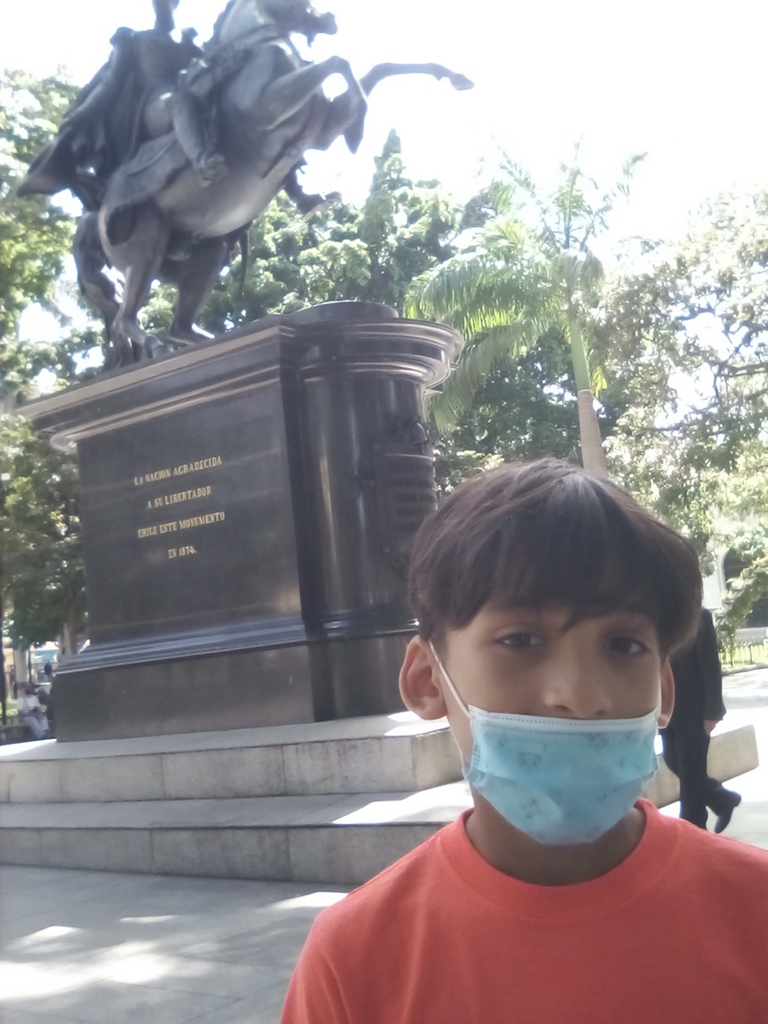
El próximo lugar a visitar era el Panteón Nacional y el Mausoleo del Libertador, así que caminamos hasta la Avenida Urdaneta y subimos hacia el Boulevard Panteón, a tan sólo una cuadra de la avenida ya se visualiza el imponente edificio del Panteón, seguimos caminando como dos cuadras y llegamos a la entrada, allí nos percatamos que habían muchos niños de planes vacacionales y no había entrada al público en general por ese día, así que no pudimos entrar, sólo pudimos ver desde afuera , tomamos algunas fotografías y a pesar de sentirnos un poco frustrados por no haber podido hacer la visita y conocer ambos sitios históricos, nos fuimos con ganas de volver en una próxima oportunidad.
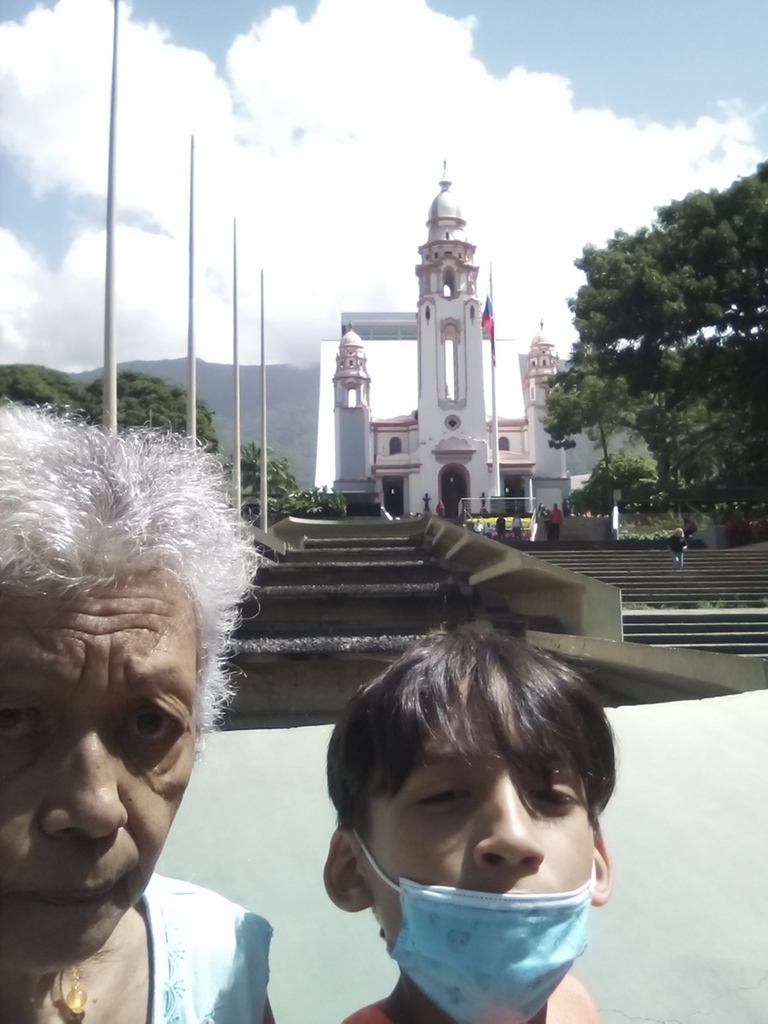
Seguidamente bajamos en dirección a la Avenida Universidad porque nuestro próximo destino era la Casa Natal de Simón Bolívar y el Museo Bolivariano. La casa Natal se encuentra entre las esquinas de San Jacinto a Traposos.
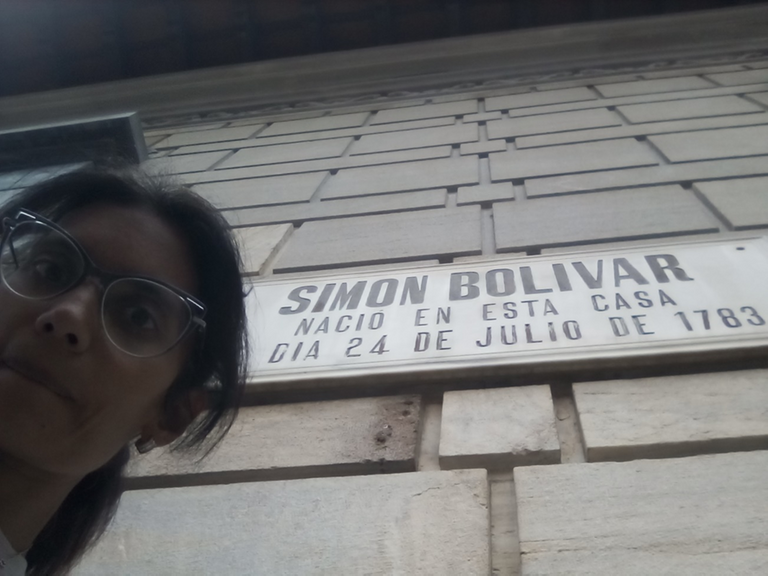
Al llegar, tuvimos que esperar afuera porque se entra por grupos, estamos en época de vacaciones y la casa no es tan grande, me sentía extraña, era mi segunda visita a la casa Natal del Libertador, la primera fue una visita con el colegio hace unos treinta y cinco años y esta vez acompañada de mi hijo. Durante los 15 minutos de espera me percaté que frente a la entrada hay varios locales que fueron casas coloniales donde funcionan pequeños cafés acogedores. Entramos finalmente, un guía nos recibió amablemente y comenzó la visita.
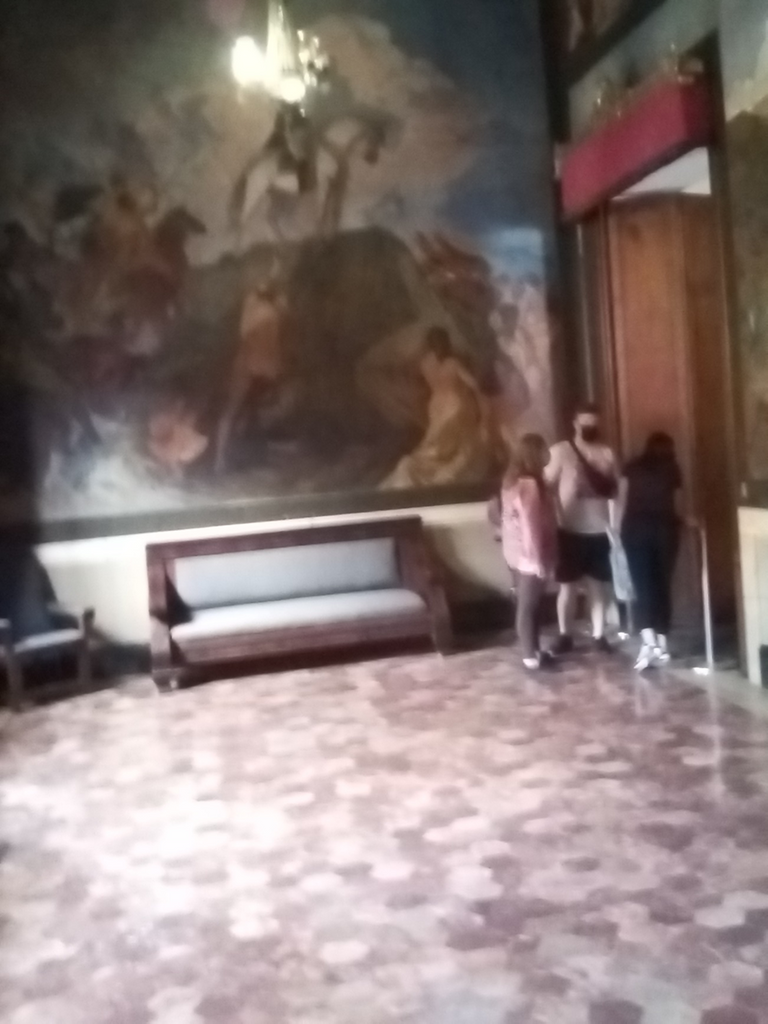
La casa colonial de una planta ocupa una mediana parcela de 23 m de frente y 60 m de fondo, con una secuencia de corredores y habitaciones, en el primer salón que visitamos se destacan algunos óleos con imágenes de escenas de la Venezuela Colonial, retratos de Fundador de Caracas Don Diego de Losada, de los próceres Antonio José de Sucre, Rafael Urdaneta y José Antonio Paéz. También llama la atención un enorme cuadro con la imagen de la antesala de la Independencia en 1810, no permiten tomar fotografías con flash para no dañar los óleos. Contigua al salón se encuentra la habitación de nacimiento del Libertador con una réplica de la cama como único mueble en dicha habitación, nos explicaron que el piso se encuentra original restaurado a partir del siglo XX.
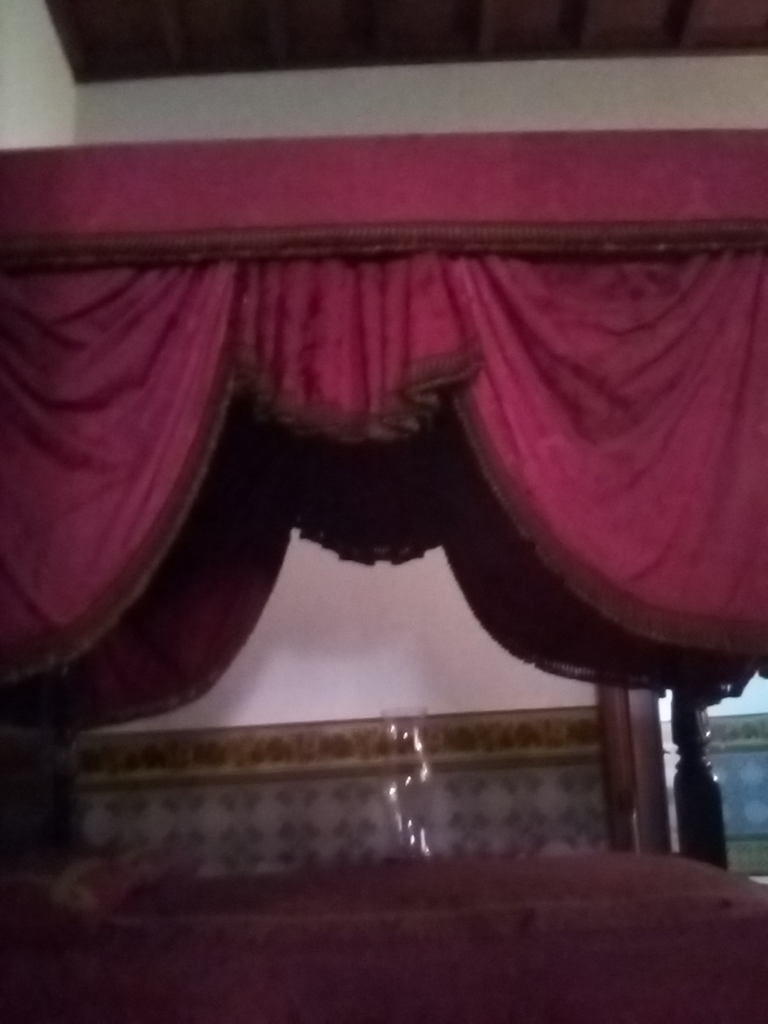
Luego pasamos a un salón, donde como obra más resaltante se encuentra la del Matrimonio de Bolívar (Tito Salas) y algunos muebles de la época.
En el siguiente salón se encuentra un espejo de más de 1 m de largo colgado en una de las paredes, algo poco usual para la época, ya que se creía que el mirarse mucho tiempo en el espejo atraía a los demonios, por eso también observamos allí algunos retratos sacros para contrarrestar esa creencia y bendecir las comidas. Entre las pinturas que más me llamaron la atención allí están el Delirio del Chimborazo, la imagen de Simón Bolívar y su maestro Simón Rodríguez, la toma de las flecheras , Migración de Oriente en 1814, entre otras. Allí se encuentran también como curiosidad varias fotografías de parientes del libertador, para la época se llamaban daguerrotipos y datan del siglo XIX. También se encuentra una caja con el puñado de tierra del Monte Sacro y la Loba de Roma, símbolo de la localidad donde Bolívar hizo el juramento.
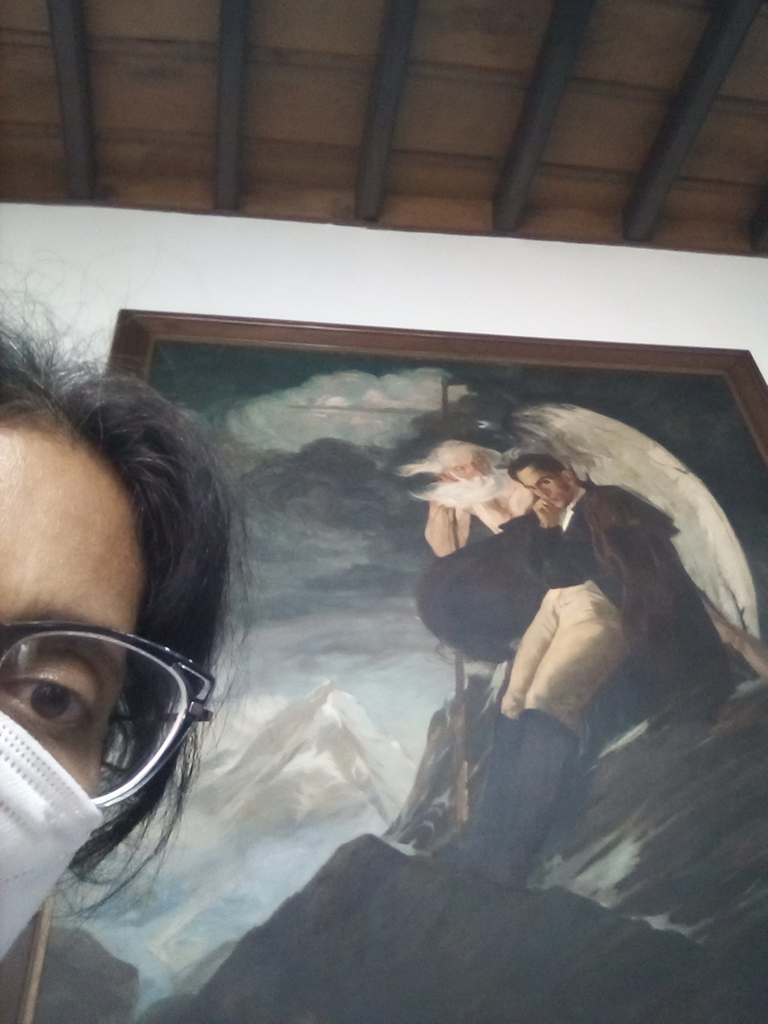
Finalmente, mientras transitábamos por los pasillos de la casa hacia la salida, emprendíamos nuestro viaje de vuelta en el tiempo, contentos de haber logrado aprender un poco más de nuestra historia como venezolanos.
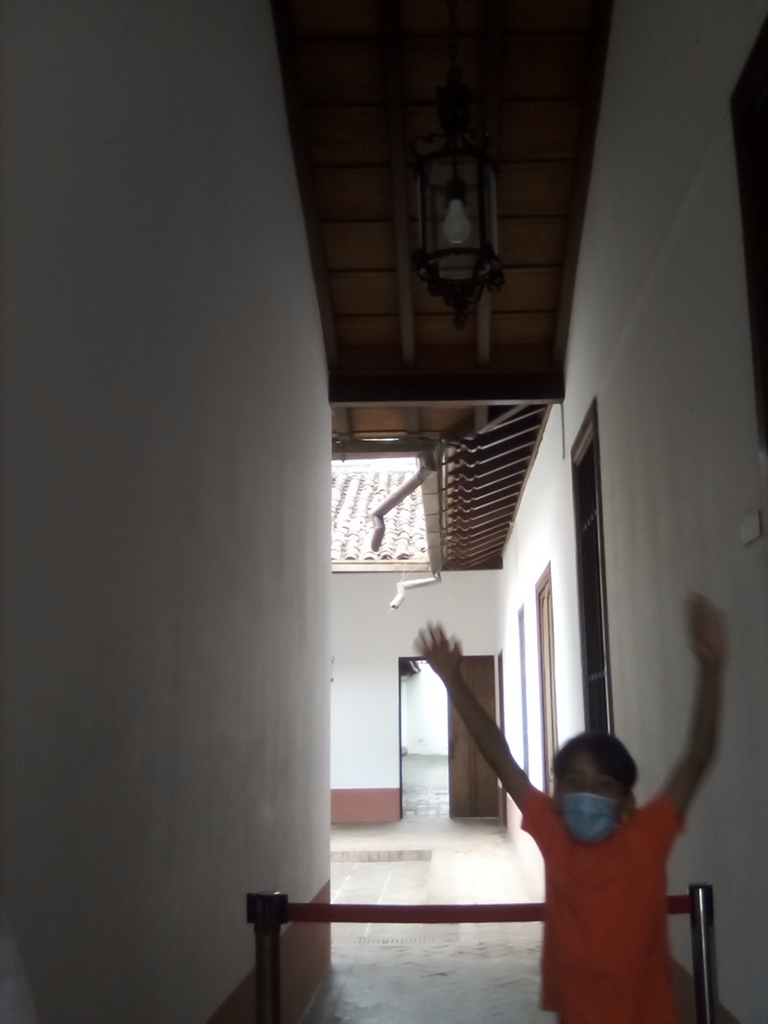
Por último visitamos el Museo Bolivariano, justo al lado de la Casa Natal, en dicho museo se exponen tres pisos con las pertenencias de Bolívar y de la época en general que incluyen desde armas, vestuario hasta utensilios de cocina, todo muy bien clasificado y colocado en vitrinas, para imaginarnos más al detalle la vida de la época.
Recomiendo a las mamis que se encuentran en Venezuela a realizar este recorrido con sus niños ahorita en vacaciones, de hecho me gustó mucho ver que la mayoría de los visitantes en la Casa Natal al menos, eran padres y/o madres con sus hijos, los cuales en su mayoría eran entre 5 y 12 años de edad quienes participaban espontáneamente con preguntas y graciosas ocurrencias en las conversaciones con el guía.
A veces puede ser más divertido ir a una montaña o a una playa, sin embargo, es importante tomarse el tiempo y realizar este tipo de actividades que complementan de una manera práctica y vivencial el conocimiento impartido en el colegio a nuestros niños, en este caso conociendo la historia de nuestro país y de la mano de sus padres, sus mayores guías.
Gracias por llegar hasta aquí, espero hayan disfrutado el paseo. Bendiciones y me gustaría leer sus comentarios.😀

Greetings to all HIVERS, especially to the Motherhood community, today I want to share a walk I did two weeks ago with my 10 year old son, we were both on vacation and I thought of doing a different tour of the usual places, yes as you read, we went to downtown Caracas to visit those places that thousands of caraqueños pass by daily and do not stop to admire its imposing colonial architecture, much less to visit and remember a little of our history.
My son did not know downtown Caracas, so when he came out of the Metro station and saw the emblematic Capitol building, he was filled with emotion and told me: "Mom, this is nice", hence the importance of listening to the point of view of children who value and appreciate things from their essence and simplicity, while we as adults have allowed the daily routine of life to make us lose the ability to enjoy the things we live in day to day.
On this walk we were accompanied by my mom, an eighty-one year old warrior, who knows the corners and avenues of downtown Caracas better than I do and thanks to her amazing physical condition for her age, she was our wonderful guide. We made our first stop at the Plaza Bolivar, it was about 9.00 am and there were not many people passing through there, so we could walk around the square and its surroundings quietly, we even watched a street play that was being performed, the truth is the square is in good condition, there were many older people sitting talking and some tourists taking pictures. And there next to the statue of our Liberator Simon Bolivar my son also wanted his.

The next place to visit was the National Pantheon and the Mausoleum of the Liberator, so we walked to Urdaneta Avenue and went up to the Pantheon Boulevard, just one block from the avenue and the imposing building of the Pantheon was already visible, we continued walking about two blocks and reached the entrance, There we noticed that there were many children on vacation plans and there was no entrance to the general public for that day, so we could not enter, we could only see from the outside, we took some pictures and despite feeling a little frustrated for not having been able to visit and see both historical sites, we left with the desire to return at a later opportunity.

Then we went down towards Avenida Universidad because our next destination was the Simón Bolívar's birthplace and the Bolivarian Museum. The Casa Natal is located between the corners of San Jacinto and Traposos.

When we arrived, we had to wait outside because you enter by groups, we are on vacation and the house is not so big, I felt strange, it was my second visit to the birthplace of the Liberator, the first was a visit with the school about thirty-five years ago and this time accompanied by my son. During the 15 minutes of waiting I noticed that in front of the entrance there are several places that were once colonial houses where small cozy cafes operate. We finally entered, a guide kindly welcomed us and the visit began.

The one-story colonial house occupies a medium-sized plot of 23 m in front and 60 m deep, with a sequence of corridors and rooms, in the first room we visited some oil paintings with images of scenes of Colonial Venezuela, portraits of the Founder of Caracas Don Diego de Losada, of the heroes Antonio José de Sucre, Rafael Urdaneta and José Antonio Paéz stand out. There is also an enormous painting with the image of the antechamber of Independence in 1810, but flash photography is not allowed so as not to damage the oil paintings. Adjacent to the living room is the room where the Liberator was born with a replica of the bed as the only piece of furniture in the room, we were told that the floor was originally restored from the twentieth century.

Then we go to a living room, where the most outstanding work is the Marriage of Bolivar (Tito Salas) and some furniture of the time.
In the next room there is a mirror of more than 1 m long hanging on one of the walls, something unusual for the time, as it was believed that looking too long in the mirror attracted demons, so we also observed there some sacred portraits to counteract that belief and bless the meals. Among the paintings that caught my attention there are the Delirium of Chimborazo, the image of Simon Bolivar and his teacher Simon Rodriguez, the taking of the flecheras, Migration of the East in 1814, among others. As a curiosity, there are also several photographs of relatives of the liberator, which were called daguerreotypes at the time and date from the 19th century. There is also a box with a handful of earth from Monte Sacro and the Loba de Roma, symbol of the place where Bolivar took the oath.
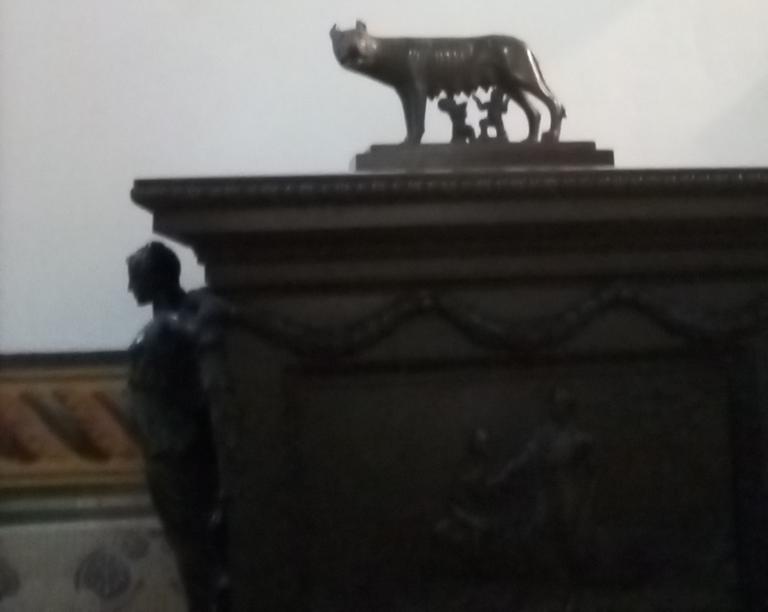
Finally, as we walked through the corridors of the house towards the exit, we started our journey back in time, happy to have learned a little more about our history as Venezuelans.

At the end we visited the Bolivarian Museum, right next to the Birth House, in this museum there are three floors with Bolivar's belongings and belongings of the time in general that include from weapons, clothing to kitchen utensils, all very well classified and placed in showcases, to imagine more in detail the life of the time.
I recommend moms who are in Venezuela to take this tour with their children now on vacation, in fact I was very pleased to see that most of the visitors in the Casa Natal at least, were fathers and / or mothers with their children, which were mostly between 5 and 12 years old who participated spontaneously with questions and funny occurrences in conversations with the guide.
Sometimes it can be more fun to go to a mountain or a beach, however, it is important to take the time and do this kind of activities that complement in a practical and experiential way the knowledge imparted at school to our children, in this case knowing the history of our country and from the hand of their parents, their greatest guides.
Thank you for coming this far, I hope you enjoyed the ride. Blessings and I would like to read your comments😀
• Banners diseñados en Canva con los elementos disponibles en su versión gratuita / Banners designed in Canva with the elements available in its free version
• Fotos de mi album personal / Photos from my personal album
• Traducido con www.DeepL.com (versión libre) / Translated with www.DeepL.com (free versión)

Has sido votado por
PROYECTO ENLACE
'Conectando Ideas y Comunidades'
PROYECTO ENLACE es un proyecto de curación de habla hispana enfocado en recompensar contenido de calidad y apoyar autores en su proceso de crecimiento en HIVE.
Creemos y apostamos por el futuro de esta gran plataforma, y estamos muy emocionados de poder hacerla crecer junto a esta comunidad. Así que te invitamos a usar nuestra etiqueta ENLACE y estar atento a todas las actividades que tenemos preparadas y que estaremos publicando en breve.
¿QUIERES AUTOMATIZAR TUS GANANCIAS DE CURACIÓN? SE PARTE DEL PROYECTO ENLACE APOYANDO A NUESTRO TRAIL EN HIVE.VOTE INGRESA AQUÍ PARA CONOCER LOS DETALLES.
¿QUIERES INVERTIR ENLACE? DESCUBRE COMO HACERLO Y GENERAR INGRESOS DE FORMA SEMANAL MEDIANTE TU DELEGACIÓN DE HP AQUÍ TE EXPLICAMOS COMO.
Te invitamos a participar en nuestro servidor de Discord: https://discord.gg/3S9y7BbWfS
Atentamente
EQUIPO ENLACE 2022
Congratulations @yamilar04! You have completed the following achievement on the Hive blockchain and have been rewarded with new badge(s):
Your next target is to reach 600 upvotes.
You can view your badges on your board and compare yourself to others in the Ranking
If you no longer want to receive notifications, reply to this comment with the word
STOPCheck out the last post from @hivebuzz:
Support the HiveBuzz project. Vote for our proposal!
Gracias por traernos tu recorrido histórico vacacional en Caracas, es interesante salir de lo habitual de los parques o playas porque nos aporta conocimiento. También en Caracas están los museos que son una muy buena opción. 😊
Así es, existen muchas opciones que pueden ser disfrutadas siempre que podamos, gracias marielarc07, consideraré la opción de los museos.😀
Hola, me hiciste acordar unas vacaciones que pasé en casa de mi hermano cuando tenía con 13 años, fui a conocer todos esos lugares. Como dices es bueno conocer todos estos sitios históricos para nosotros como venezolanos. A mis hijos no los he podido llevar por que no vivimos en Caracas.
Excelente paseo que hiciste con tu hijo, de seguro lo recordará siempre.
Saludos.
Espero que pronto puedas escaparte a la capital y traer a tus niños, en la mayoría de estos sitios trabajan de Martes a Domingo de 9.00 am a 4.00 pm. Saludos @beysyd.
👍 gracias por la información